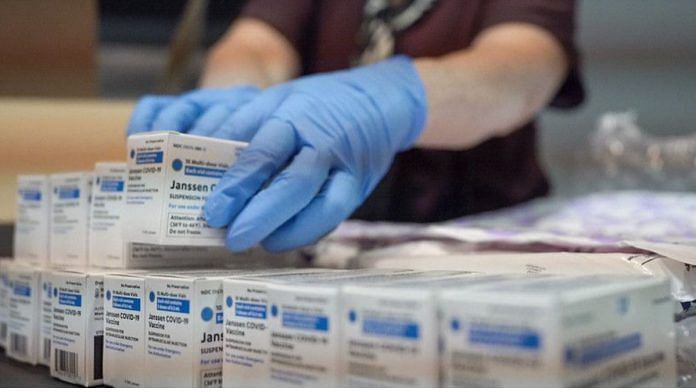Bengaluru: The Narendra Modi government Saturday granted Emergency Use Authorisation (EUA) to the single-dose Johnson & Johnson (J&J) Covid-19 vaccine.
Union Health Minister Mansukh Mandaviya tweeted saying that India had expanded its vaccine basket. “Johnson and Johnson’s single-dose Covid-19 vaccine is given approval for Emergency Use in India….This will further boost our nation’s collective fight against Covid-19,” his tweet read.
India expands its vaccine basket!
Johnson and Johnson’s single-dose COVID-19 vaccine is given approval for Emergency Use in India.
Now India has 5 EUA vaccines.
This will further boost our nation's collective fight against #COVID19
— Mansukh Mandaviya (@mansukhmandviya) August 7, 2021
It became the fifth vaccine to get an emergency nod in the country, after Covishield, Covaxin, Sputnik V and Moderna.
Here’s how the J&J vaccine works, and what its efficacy is.
Also read: Facilities at Bharat Biotech to be augmented to increase Covaxin supply, Mandaviya says
All about the vaccine
Known as the JNJ-78436735 or Ad26.COV2.S, the single-dose vaccine is based on the genetic instructions of the virus, which is essential for building the spike protein — the part of SARS-CoV-2 that the virus uses to enter human cells.
The vaccine uses a disabled adenovirus, a common virus that causes a range of illnesses, to deliver the genetic material of SARS-CoV-2 to human cells.
The adenovirus acts as the delivery vehicle for the DNA of the SARS-CoV-2, pushing it into the nucleus of the cell.
A New York Times report explained what happens after this material enters the cells: “The adenovirus is engineered so it can’t make copies of itself, but the gene for the coronavirus spike protein can be read by the cell and copied into a molecule called messenger RNA, or mRNA.”
The mRNA is read by the cell’s molecules, which then begin making spike proteins. Some of these spike proteins protrude the surface of the cells and are then recognised by the immune system.
The immune system starts producing antibodies that would ward off the original infection.
According to Johnson & Johnson, the vaccine is estimated to remain stable for two years at -20°C and a maximum of four and a half months at routine refrigeration temperatures of 2° to 8°C.
How efficacious is the vaccine
In a study conducted in the US, the vaccine had a 72 per cent efficacy rate while a study in South Africa found its efficacy to be at 64 per cent.
The vaccine had 86 per cent efficacy against severe forms of Covid-19 in the US and 82 per cent against such cases in South Africa.
Nearly two months after the vaccine was rolled out in the US, the federal health officials in April called for a halt in the use of the vaccine as six women had developed a rare blood-clotting disorder.
The vaccine was resumed within 10 days, but with a warning label stating the risks.
Then in May, Denmark discontinued the use of the vaccine over the risk of blood clots.
Also read: Covid vaccine production ramped up to 40 lakh doses per day, says MoS Health Bharti Pawar



